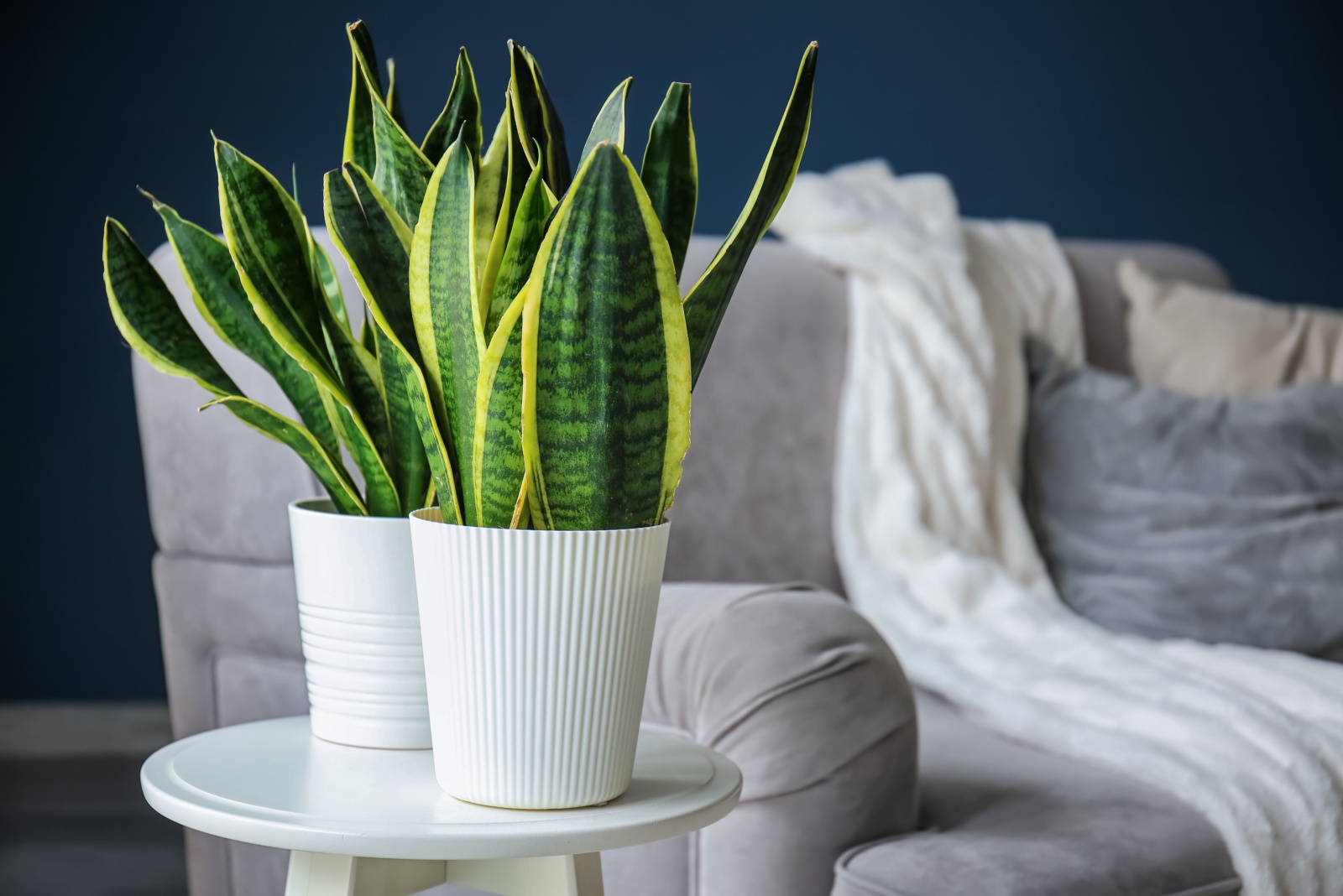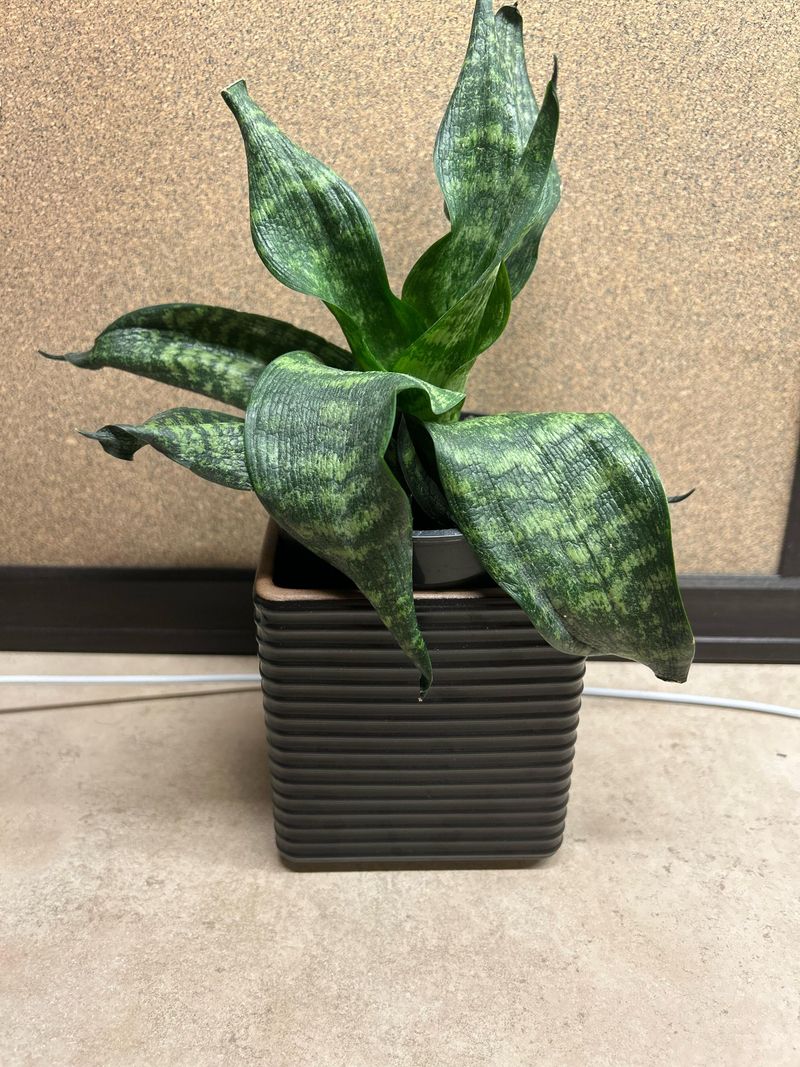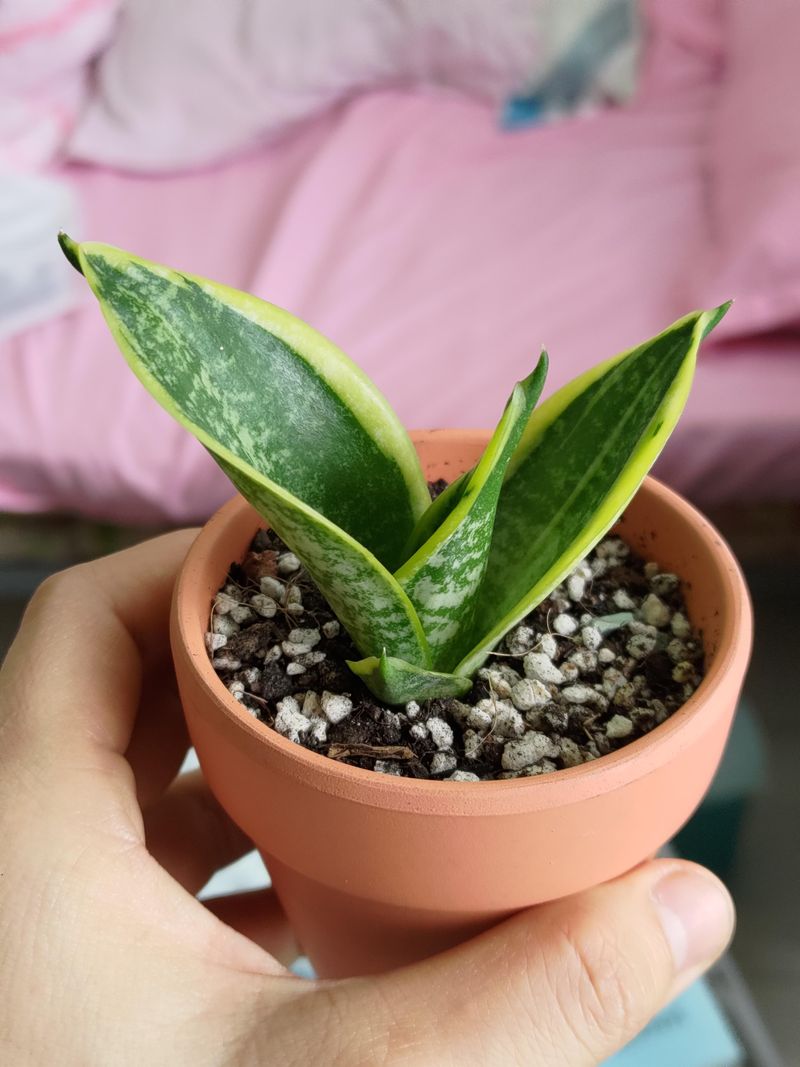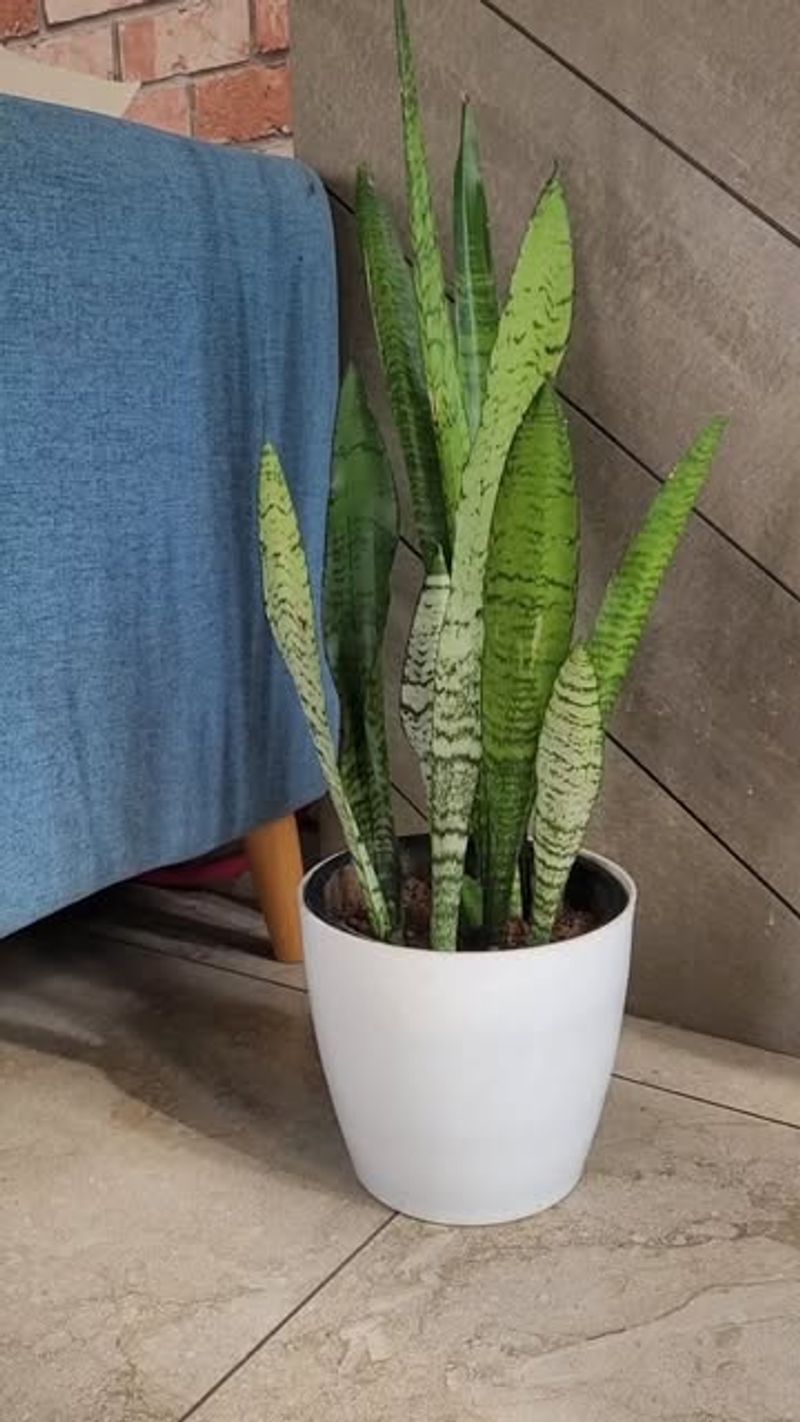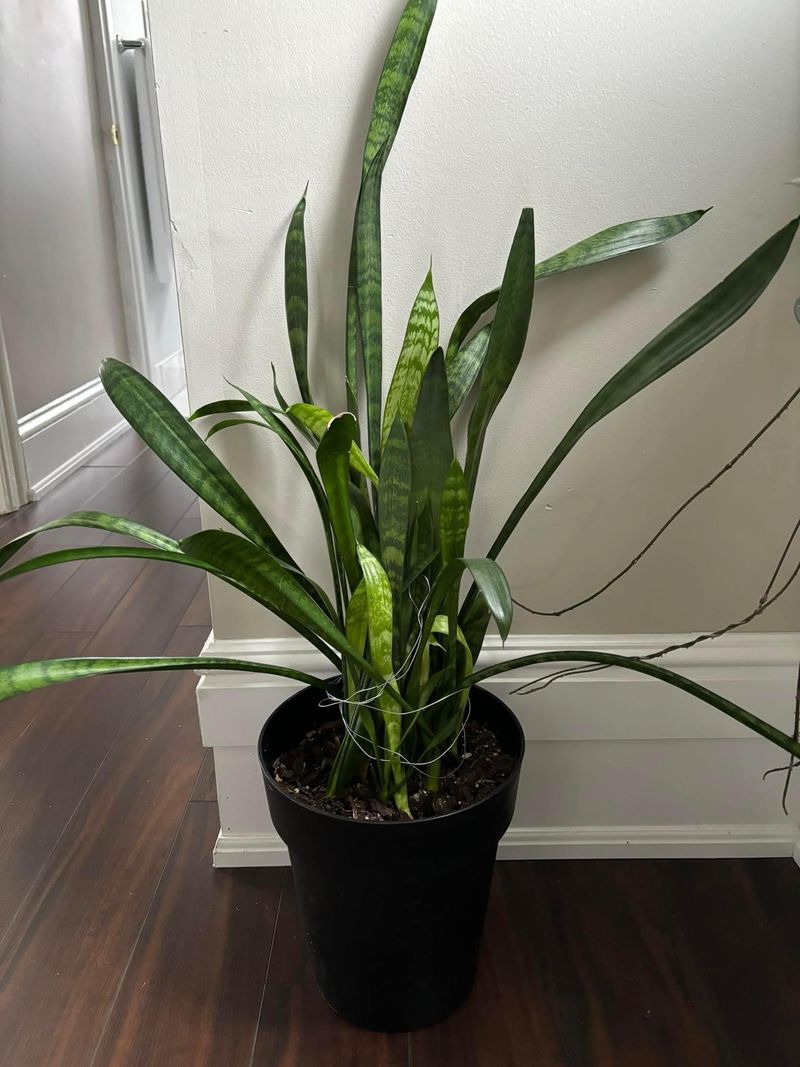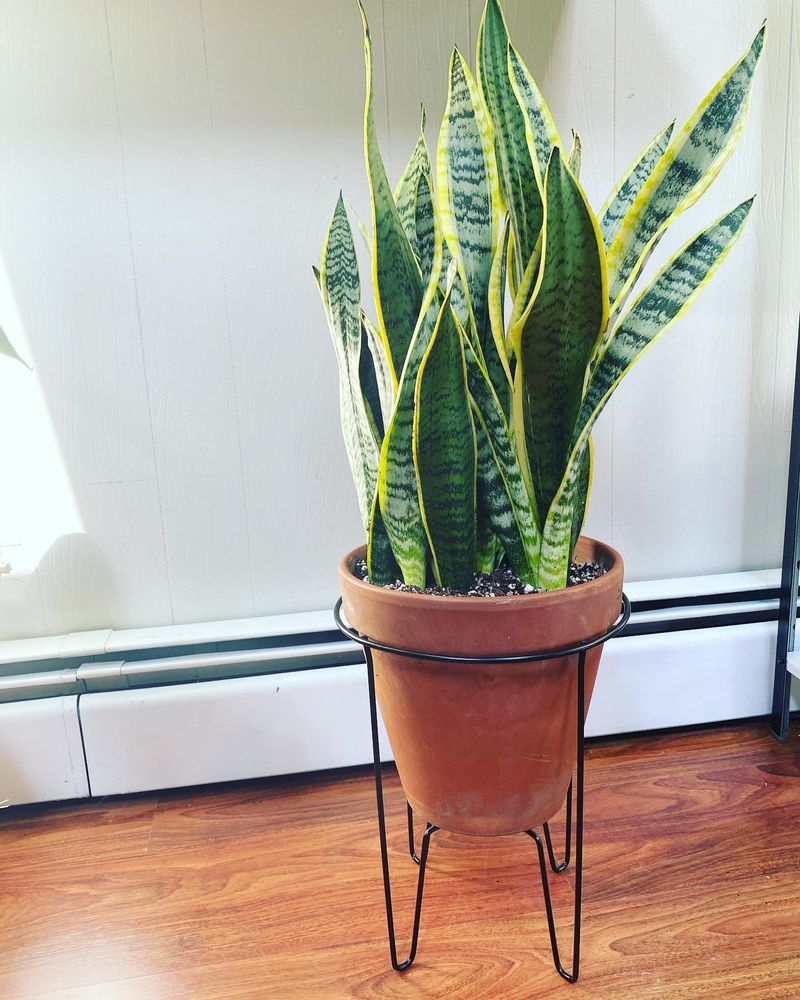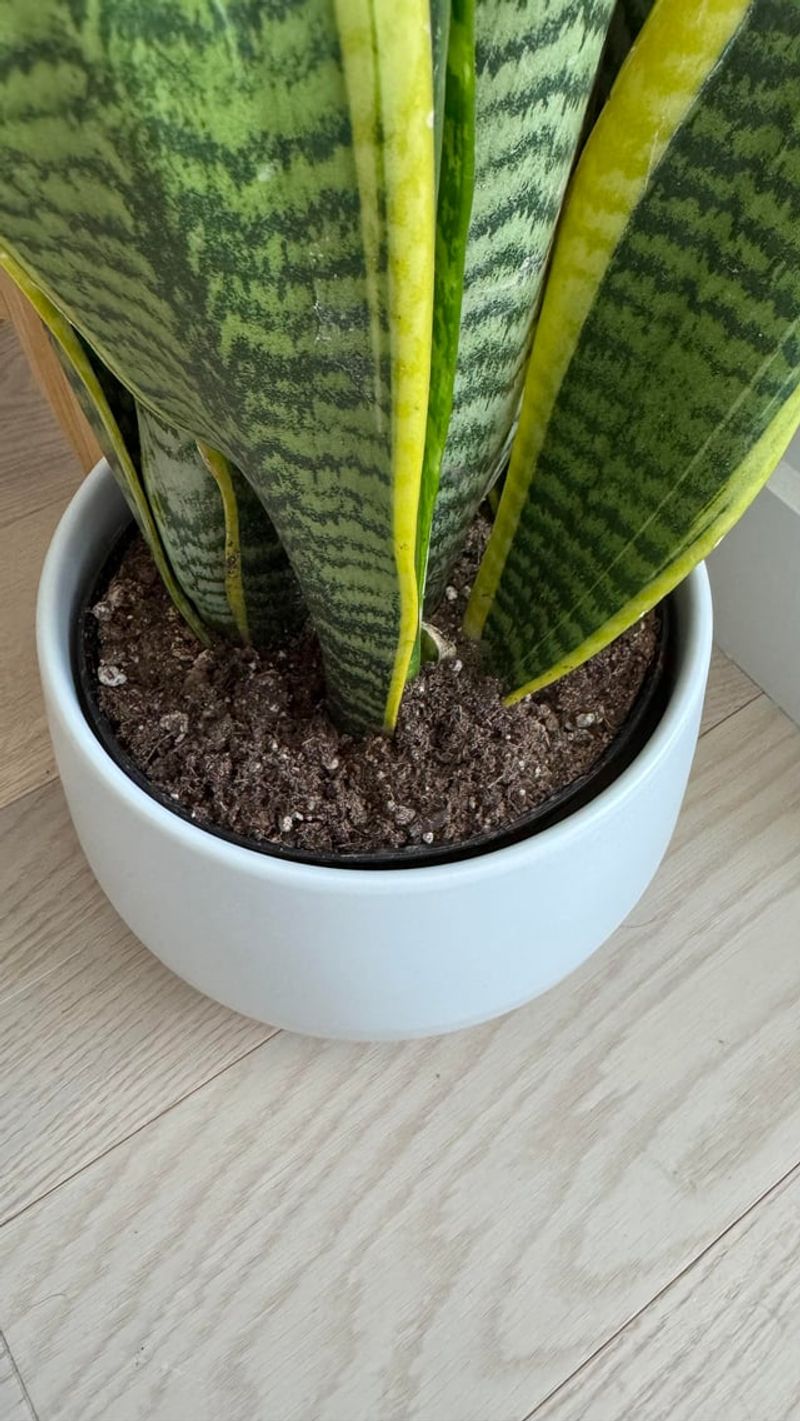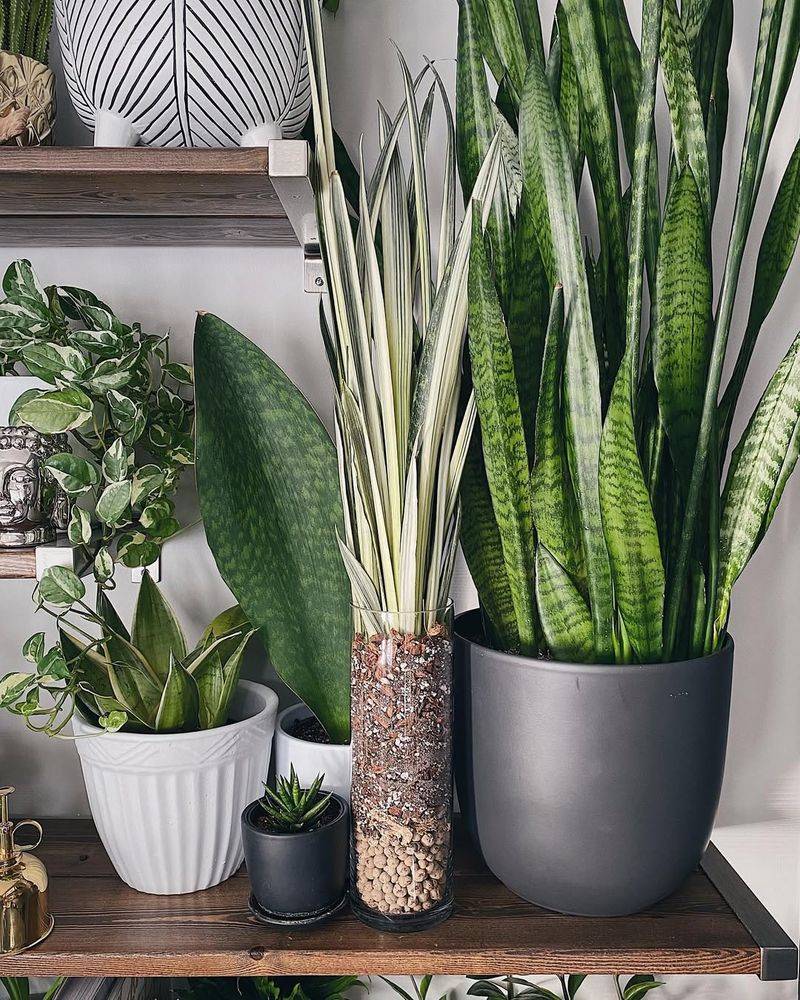Snake plants are known for being tough and low-maintenance, but even these hardy houseplants can struggle in Texas. The state’s unique climate—hot summers, unpredictable humidity, and intense sunlight—creates challenges that many plant owners don’t expect.
If your snake plant looks sad or isn’t thriving, you’re probably making one of these common mistakes without even realizing it.
1. Overwatering During Humid Months
Many gardeners forget that Texas humidity levels change dramatically throughout the year, especially in coastal areas like Houston. When moisture hangs heavy in the air, your snake plant needs far less water than you might think.
Overwatering is the quickest way to kill these drought-tolerant beauties. Their roots rot easily when soil stays damp too long.
Check the soil with your finger before watering—if it feels even slightly moist two inches down, wait a few more days. Adjust your watering schedule as seasons shift across Texas.
2. Placing It In Direct Afternoon Sun
Texas afternoon sun is brutal, and while snake plants tolerate bright light, they can actually sunburn. Those tough-looking leaves will develop pale, bleached patches or brown crispy edges when exposed to intense rays streaming through west-facing windows.
Think of them as shade-lovers that appreciate gentle morning light instead. Move your plant a few feet back from the window or position it where it gets filtered light.
East-facing windows work beautifully in Texas homes, giving just enough brightness without the scorching heat.
3. Using Heavy, Water-Retaining Soil
Standard potting mix holds too much moisture for snake plants, which naturally grow in sandy, well-draining environments. In Texas, where indoor air conditioning creates temperature swings, soggy soil becomes even more problematic.
Your snake plant’s roots need air pockets to breathe and stay healthy. Mix regular potting soil with perlite, coarse sand, or cactus mix at a 1:1 ratio.
This creates the fast-draining environment these plants crave. Proper soil makes all the difference between a thriving plant and one that slowly declines despite your best efforts.
4. Ignoring Temperature Fluctuations Indoors
Air conditioning runs constantly during Texas summers, creating indoor temperatures that drop significantly at night. Snake plants prefer consistency and can struggle when temperatures swing wildly between day and night.
Avoid placing your plant directly under AC vents or near exterior doors that let in blasts of hot air. These temperature shocks stress the plant and slow its growth.
Find a stable spot away from drafts where temperatures stay relatively even. A corner away from heating and cooling sources helps your snake plant settle in and thrive year-round.
5. Fertilizing Too Often Or At Wrong Times
Snake plants are slow growers that don’t need much fertilizer, yet many Texas gardeners over-feed them hoping for faster growth. Too much fertilizer causes salt buildup in the soil, leading to brown leaf tips and stunted development.
Feed your snake plant only once or twice during the growing season—spring and early summer work best. Use a diluted liquid fertilizer at half strength.
During fall and winter, skip feeding entirely since growth naturally slows down. Less is genuinely more with these low-maintenance plants, especially in Texas where they already face environmental stress.
6. Keeping It In A Pot Without Drainage
Decorative pots without drainage holes look beautiful, but they’re a death sentence for snake plants in Texas humidity. Water has nowhere to escape, so it pools at the bottom and creates a swampy environment that rots roots quickly.
Always use pots with drainage holes, or place your plant in a nursery pot inside the decorative one. After watering, empty any water that collects in the outer pot.
This simple step prevents so many problems. Proper drainage is non-negotiable for keeping your snake plant healthy and happy for years to come.
7. Not Adjusting Care For Texas Hard Water
Texas is famous for hard water loaded with minerals like calcium and magnesium. Over time, these minerals build up on soil surfaces and leaf tips, creating white crusty deposits and brown edges.
While snake plants tolerate various conditions, hard water slowly damages their appearance. Let tap water sit overnight before using it, allowing some minerals to settle.
Better yet, collect rainwater when possible or use filtered water occasionally. Wipe leaves gently with a damp cloth every few weeks to remove mineral deposits and keep your plant looking its absolute best.

